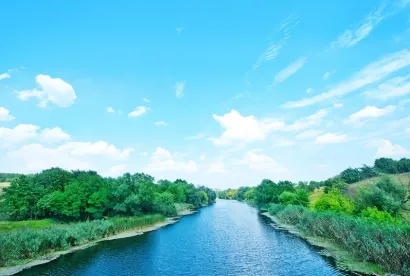At the heart of the Proposed Rule and the 2015 WOTUS Rule are conflicting interpretations of the Supreme Court’s decision in Rapanos v. United States. As discussed in our 2013 alert, Rapanos was a fractured decision in which the Supreme Court’s members issued five different opinions, including dueling opinions by Justice Kennedy and Justice Scalia. The 2015 WOTUS Rule was based largely on Justice Kennedy’s concurring opinion, which formulated a “significant nexus” test for determining jurisdiction.
In the lead up to the Proposed Rule, it was widely anticipated that the Agencies would revisit the question as to how to interpret and apply Rapanos. The Proposed Rule derives key elements from Justice Scalia’s decision in Rapanos—particularly its emphasis on the need for a direct hydrologic connection (rather than a “significant nexus”) for establishing jurisdiction. The Agencies also broaden the legal underpinnings of the Proposed Rule, assimilating other Supreme Court jurisprudence interpreting the Clean Water Act as well as the core concept of public navigability.
Broadly speaking, the Proposed Rule defines “waters of the United States” with a focus on “relatively permanent flowing and standing waterbodies that are traditional navigable waters in their own right or that have a specific connection to traditional navigable waters, as well as wetlands abutting or having a direct hydrologic surface connection to those waters.” Further, in considering the characteristics of a waterbody, the Agencies propose to focus on conditions occurring within a “typical year”— a new regulatory term, defined as “within the normal range of precipitation over a rolling thirty-year period for a particular geographic area.” Times of drought or extreme flooding would be not be considered a “typical year.”
Specifically, the Proposed Rule defines “waters of the United States” as encompassing:
-
Traditional navigable waters
-
Tributaries to traditional navigable waters
-
Ditches used for navigation or affected by the tide
-
Certain lakes and ponds
-
Impoundments of jurisdictional waters
-
Wetlands abutting or having a direct hydrologic surface connection to an existing “water
Notably, under the Proposed Rule, use of a waterbody “within interstate or foreign commerce” is recognized as a characteristic of a traditional navigable water—but “interstate waters” is no longer treated as a separate category of jurisdictional waters.
Additionally, the Proposed Rule would exclude the following:
-
Ephemeral features that contain water only during or in response to rainfall
-
Most agricultural and roadside ditches
-
Wetlands that neither abut nor have a direct hydrologic connection to an existing “water of the United States”
A number of existing exclusions would also continue, such as groundwater, prior converted cropland and storm water control features constructed in uplands.
State and Federal Cooperation and Coordination
The Proposed Rule also seeks to clarify and “re-balance” the roles and responsibilities of the federal government, states, and tribes when it comes to regulating water resources. The Agencies emphasized that they did not view the purpose of the Proposed Rule as determining which water resources warrant environmental protection and which do not, but rather as drawing the boundary between water resources that are subject to Clean Water Act jurisdiction and those water resources that states and tribes are free to manage under their independent authorities. The Agencies have stated that the rule would better recognize and respect the rights of states and tribes to manage their own water resources.
The Agencies are also considering how to incorporate states and tribes in the federal jurisdictional determination process. The Agencies are specifically exploring how to establish a geospatial dataset of “waters of the United States.” This dataset would be publicly available and would depict federally jurisdictional waters as well as applicable state and tribal water quality standards. The Agencies believe that this dataset would provide greater regulatory certainty and clarity.
Comments Requested
The Agencies are requesting comments from stakeholders. Comments will be accepted until 60 days after the Proposed Rule is published in the Federal Register.
The Agencies have requested comment on a number of specific issues, including (1) whether tributaries should be limited to year-round flowing rivers and streams; (2) whether lakes and ponds should be more precisely defined; (3) whether and how to incorporate a data or mapping system that would identify waters subject to jurisdiction under the Clean Water Act; and (4) how the rule can be implemented to maintain clarity (e.g. by establishing a flooding frequency to determine when wetlands are jurisdictional). VNF will identify additional issues worthy of comment in future updates on the Proposed Rule.







 />i
/>i

